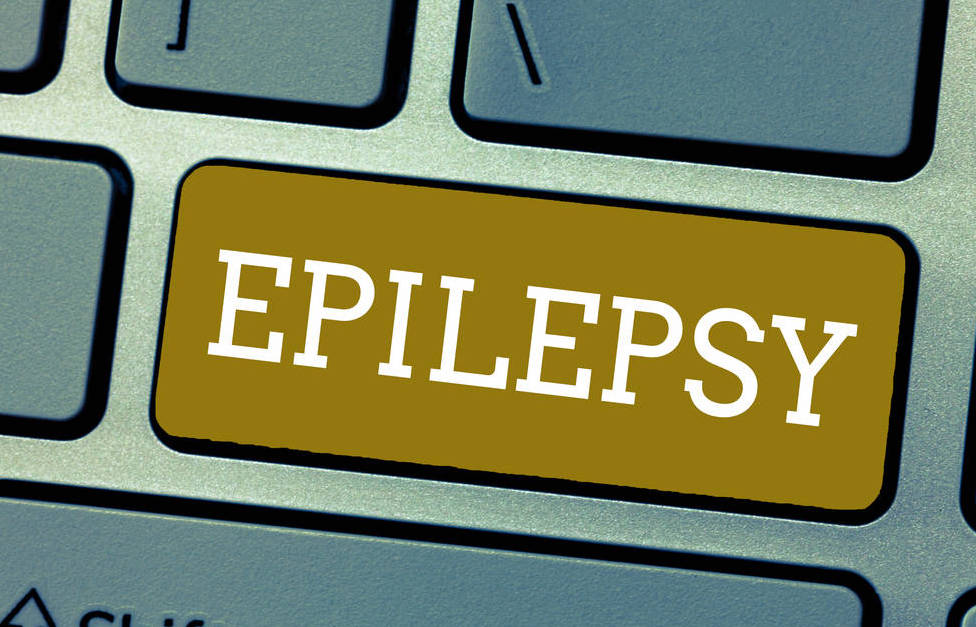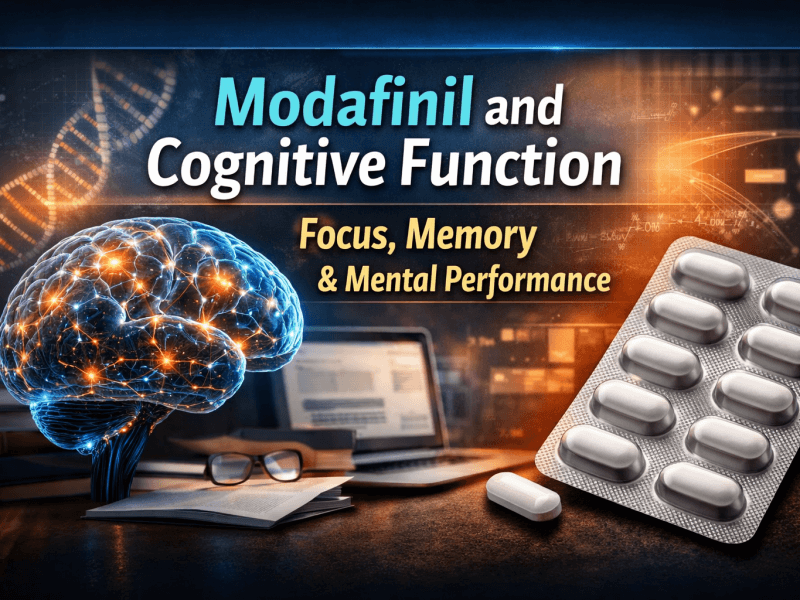Introduction: Understanding Modafinil and Epilepsy
Modafinil is primarily known as a wakefulness-promoting drug, commonly prescribed for conditions such as narcolepsy, sleep apnea, and shift work disorder. However, its use in patients with epilepsy particularly concerning its impact on seizure activity has been the subject of growing interest. We will explore the existing research surrounding the use of modafinil for individuals with epilepsy, examining its potential benefits and the associated risks of seizures.
What Is Modafinil?
Modafinil is a central nervous system stimulant that works by altering neurotransmitter activity in the brain. It is commonly used to treat excessive daytime sleepiness and is known for promoting wakefulness without the severe side effects often associated with other stimulants like amphetamines.
Epilepsy: A Brief Overview
Epilepsy is a neurological disorder characterized by recurrent seizures, which occur due to abnormal electrical activity in the brain. Seizures can vary in type, from brief lapses in awareness to violent convulsions, and can significantly impact a person’s quality of life. Epilepsy can be caused by various factors, including genetic predisposition, brain injury, or underlying medical conditions.
The Relationship Between Modafinil and Epilepsy
Modafinil is often considered in the treatment regimen for epilepsy patients who experience excessive daytime sleepiness due to antiepileptic drugs (AEDs) or the condition itself. However, the relationship between modafinil and epilepsy is not fully understood, and ongoing studies continue to evaluate its safety profile for epileptic patients.
Modafinil and Seizure Risk: What Does the Research Say?
Overview of Existing Studies
The safety of modafinil in patients with epilepsy has been a topic of interest for several years. While modafinil’s stimulating effects are helpful in addressing sleep issues, researchers have been concerned about its potential to alter seizure thresholds, increasing the risk of seizures.
Seizure Induction: A Risk?
Studies have reported mixed results when it comes to modafinil’s potential to trigger seizures. Some small-scale studies suggest modafinil could increase seizure frequency or provoke new-onset seizures in individuals with epilepsy, particularly in those who are already at a high risk for seizures.
However, other research has not found any significant increase in seizure frequency. This discrepancy has led to a lack of consensus within the medical community regarding modafinil’s safety in epilepsy patients.
Types of Epilepsy and Modafinil Response
Different forms of epilepsy may influence how modafinil affects seizure activity. For instance, patients with focal seizures may experience different outcomes than those with generalized seizures. The specific type of epilepsy and seizure history can play a key role in determining the appropriateness of modafinil use.
Potential Mechanisms Behind Seizure Risk
Modafinil’s Impact on the Brain
To understand why modafinil might affect seizure risk, we need to delve into its mechanism of action. Modafinil primarily affects the dopamine system by increasing the levels of dopamine in the brain. Dopamine plays a role in regulating movement and mood, but excessive dopamine levels can lead to heightened neuronal excitability a potential trigger for seizures.
Additionally, modafinil’s effect on other neurotransmitters such as norepinephrine and serotonin could also influence the seizure threshold. These neurotransmitters are involved in regulating brain activity, and any imbalance could potentially disrupt the delicate balance in patients with epilepsy.
The Role of Antiepileptic Drugs (AEDs)
For many patients with epilepsy, managing seizure frequency involves taking AEDs. Modafinil can interact with these drugs in complex ways, potentially lowering the effectiveness of some AEDs. This interaction could make it more difficult to maintain seizure control in individuals who are already managing their condition with medication.
Modafinil’s Benefits in Epilepsy Treatment
Managing Daytime Sleepiness in Epileptic Patients
Despite the concerns about seizure risk, modafinil can offer significant benefits for epilepsy patients who experience daytime sleepiness, often a side effect of AEDs. By improving wakefulness, modafinil can enhance cognitive function, alertness, and overall quality of life, which are often impaired by chronic sleep deprivation.
Cognitive Enhancement for Epilepsy Patients
Modafinil has been studied for its cognitive-enhancing effects. Some studies suggest that it may help improve executive functions such as attention, working memory, and decision-making. For individuals with epilepsy, whose cognitive functions may be affected by recurrent seizures or long-term medication use, modafinil could offer a valuable cognitive boost.
Risk Factors for Seizure Induction with Modafinil
Individual Sensitivity and Epilepsy Subtype
One of the most critical factors in determining whether modafinil is safe for a particular epilepsy patient is their individual sensitivity to seizure inducing stimuli. Some patients with drug resistant epilepsy or those with a history of uncontrolled seizures may be more vulnerable to modafinil’s effects.
Dosage and Duration of Modafinil Use
The dose of modafinil and the duration of its use may also play a crucial role in determining the risk of seizures. Higher doses or long-term use could increase the likelihood of adverse effects, including seizure induction. Therefore, physicians must carefully monitor modafinil therapy in epilepsy patients.
Alternatives to Modafinil for Epilepsy Patients
Other Wakefulness-Promoting Agents
For patients who are unable to tolerate modafinil due to the risk of seizures, alternative medications such as armodafinil or even stimulant medications like methylphenidate might be considered. These alternatives may offer similar benefits in terms of wakefulness without posing as high a seizure risk.
Lifestyle Modifications for Managing Sleepiness
In some cases, managing sleepiness in epilepsy patients may not require medication at all. Lifestyle changes such as improving sleep hygiene, reducing stress, and managing seizure triggers can go a long way in improving overall well-being without the need for pharmaceutical interventions.
Clinical Guidelines for Using Modafinil in Epilepsy
Medical Supervision and Monitoring
Any use of modafinil in patients with epilepsy should be done under strict medical supervision. Regular monitoring of seizure activity, cognitive function, and overall health is essential to ensuring that modafinil is beneficial without causing harm.
Personalization of Treatment Plans
Each epilepsy patient is unique, and their treatment plan should be tailored accordingly. If modafinil is considered, factors like the patient’s seizure type, frequency, and response to other medications should all be taken into account.
Conclusion
The use of modafinil for epilepsy patients requires careful consideration of both the benefits and potential risks. While modafinil can significantly improve wakefulness and cognitive function in some individuals, there are concerns about its ability to provoke seizures, especially in those with pre-existing seizure disorders.
Ultimately, whether modafinil is an appropriate treatment for epilepsy will depend on the individual patient, their seizure history, and the guidance of their healthcare provider. Close monitoring and ongoing research will be crucial in helping to define the best course of action for those with epilepsy who may benefit from this medication.
‼️ Disclaimer: The information provided in this article about modafinil is intended for informational purposes only and is not a substitute for professional medical consultation or recommendations. The author of the article are not responsible for any errors, omissions, or actions based on the information provided.
References:
- U.S. Food and Drug Administration. PROVIGIL. U.S. Department of Health and Human Services. https://www.accessdata.fda.gov/drugsatfda_docs/label/2015/020717s037s038lbl.pdf . 2015
- Ballon JS, Feifel D. A systematic review of modafinil: potential clinical uses and mechanisms of action. J Clin Psychiatry. 2006
- Willavize, S. A., Nichols, A. I., & Lee, J. Population pharmacokinetic modeling of armodafinil and its major metabolites. https://doi.org/10.1002/jcph.800 . 2016
- Fuxe K, et al. Modafinil enhances the increase of extracellular serotonin levels induced by the antidepressant drugs fluoxetine and imipramine: a dual probe microdialysis study in awake rat. Synapse. 2005
- Mechanisms of modafinil: A review of current research. nih.gov. 2007
- PROVIGIL (modafinil) Tablets. FDA.GOV. 2010
- Oliva Ramirez A, Keenan A, Kalau O, Worthington E, Cohen L, Singh S. Prevalence and burden of multiple sclerosis-related fatigue: a systematic literature review. 2021.
- Ciancio A, Moretti MC, Natale A, Rodolico A, Signorelli MS, Petralia A. Personality Traits and Fatigue in Multiple Sclerosis: A Narrative Review. Journal of Clinical Medicine. 2023
- Mereu, M., Bonci, A., Newman, A. H., & Tanda, G. The neurobiology of modafinil as an enhancer of cognitive performance and a potential treatment for substance use disorders. https://doi.org/10.1007/s00213-013-3232-4 . 2013


